Significance
Xingang’s Fengtian Temple has undergone several renovations, most of which were carried out by craftsmen of the Cantonese school. As a consequence, the architecture exhibits Cantonese temple styles from a range of different periods. In particular, the work produced by renowned Cantonese school carpenter Ngo Hai-tong and the Koji pottery decorations in the Sanchuan Hall created by Ang Khun-hok are all artifacts of historic value. The Tiger God statue on the altar table is also unique because of the golden wreath it wears, bestowed by the Jiaqing Emperor of the Qing Dynasty. Duplicates of the statue have been acquired from Fengtian Temple and enshrined in hundreds of temples across Taiwan. On the birthday of the Tiger God, or Tiger General as he is known, worshippers return with the duplicate statues to pay homage to their original temple, leading to a festive event that gathers all the Tiger God statues in Taiwan under one roof. Another special feature of the temple is its traditional Heavenly Mother Pilgrimage, conducted during the Lantern Festival. The festival is an important annual folk activity in the Xingang area.
History
Fengtian Temple was built to enshrine the Heavenly Mother, Mazu. It was originally called Tianfei (Heavenly Princess) Temple when it was built by local residents in 1700, and later renamed Tianhou (Heavenly Empress) Temple. However, the temple was damaged in a series of floods caused by course changes in the Ponkan River (today’s Beigang River). In 1799, it was finally destroyed by a massive flood. Naval Commander Wang De-lu (1770 – 1842) subsequently donated money to have a new temple constructed and the resulting Fengtian Temple was completed in 1811. This was not the final calamity to befall the temple, however. In 1895, the Sanchuan Hall of the temple collapsed in a major earthquake. The worship hall and the main hall were tilted and the columns of the rear hall were also broken. Reconstruction and renovations began in the following year. In 1912, Ngo Hai-tong, the renowned temple builder from Taipei, was hired to lead a team to repair the severely damaged temple structures. The present appearance of the temple is the result of Ngo’s reconstruction along with a number of expansions. Designated by the Chiayi County Government as a historic site, the temple maintains a tradition of conducting a Mazu pilgrimage around the eighteen neighboring villages during the Lantern Festival in the first lunar month of each year. The pilgrimage covers a large area, including Xingang and Xikou Townships in Chiayi County and Yuanchang and Beigang Townships in Yunlin County. It passes dozens of temples on the way and is one of the major religious events of the Yunlin-Chiayi region.
Special Features
1The Layout of the Sanchuan Hall The most fascinating feature of Fengtian Temple’s architecture is its Sanchuan Hall, built by Cantonese school craftsman Ngo Hai-tong in 1912, during the Japanese Colonial Period. Although he was a temple builder of the Cantonese school, his works contain certain characteristic Zhangzhou school design elements. The roof is a double-eaved hip-and-gable design with an extra gable on the top. The well-proportioned upper eave was built using cantilevers; its overlapping eave tiles extend outward to overhang the columns. Meanwhile a shallow slope design was adopted for the edges of the lower gable. The whole creates a towering visual effect. The front of the hall is decorated with stone sculptures, and the eaves are supported by columns at the front and back. Sculptures of the Eight Immortals and Panlong, the water dragon, grace the front columns and carvings of flowers and birds decorate the rear ones. The dragons painted on the central double door act as door guardians. The interior structure of the Sanchuan Hall is four pillars deep, creating three sections between the pillars (sìzhù sānjiān). The roof is supported by a framework formed by seven pairs of beams (qījiàhéng). The cornices, which serve as part of the roof’s water drainage system, extend outward with carvings in the form of hanging flower baskets. Supported by brackets shaped like curved blades, the four corners of the roof rise up from the columns, embellished with flower carvings that hang down from them. The Koji pottery decorations in the Sanchuan Hall were created by famous Koji craftsman Ang Khun-hok during the temple’s 1961 repair.
The most fascinating feature of Fengtian Temple’s architecture is its Sanchuan Hall, built by Cantonese school craftsman Ngo Hai-tong in 1912, during the Japanese Colonial Period. Although he was a temple builder of the Cantonese school, his works contain certain characteristic Zhangzhou school design elements. The roof is a double-eaved hip-and-gable design with an extra gable on the top. The well-proportioned upper eave was built using cantilevers; its overlapping eave tiles extend outward to overhang the columns. Meanwhile a shallow slope design was adopted for the edges of the lower gable. The whole creates a towering visual effect. The front of the hall is decorated with stone sculptures, and the eaves are supported by columns at the front and back. Sculptures of the Eight Immortals and Panlong, the water dragon, grace the front columns and carvings of flowers and birds decorate the rear ones. The dragons painted on the central double door act as door guardians. The interior structure of the Sanchuan Hall is four pillars deep, creating three sections between the pillars (sìzhù sānjiān). The roof is supported by a framework formed by seven pairs of beams (qījiàhéng). The cornices, which serve as part of the roof’s water drainage system, extend outward with carvings in the form of hanging flower baskets. Supported by brackets shaped like curved blades, the four corners of the roof rise up from the columns, embellished with flower carvings that hang down from them. The Koji pottery decorations in the Sanchuan Hall were created by famous Koji craftsman Ang Khun-hok during the temple’s 1961 repair.
2The Pilgrimage BannerThe large pilgrimage banner that believers once carried on a procession to Tainan is a 350-centimeter-tall, 113-centimeter-wide red woolen vertical banner. On the front side are embroidered images of the Eight Immortals and the goldwork Chinese characters for Ponkan and Pilgrimage to Tainan. On the back side are a dragon and phoenix design with the embroidered honorific Heavenly Mother of Fengtian Temple. The inscription at the edge of the flag “Respectfully presented to the Heavenly Mother of Ponkan Fengtian Temple by Lin Dong-yi of Damaoxibao (today’s northern Xingang Township), Chiayi County,” indicates that the flag was made between 1901 and 1917, since Fengtian Temple did participate in religious activities in Tainan during the Japanese Colonial Period. It is believed that the flag was in use around that time. The unique design and embroidery work are exquisite and the patterns on both sides of the flag are vividly detailed.
3The Japanese Emperor Tablet In 1928, the Showa Emperor instructed Mioshin-ji, the main temple of the Rinzai Zen Buddhist sect situated in Kyoto, to give each of the twenty major temples in Taiwan an Emperor’s Longevity Tablet as a means to strengthen Japanization in Taiwan. After World War II ended in 1945, all of the emperor tablets were destroyed except for the one kept in Fengtian Temple. The tablet, along with its case, is the only one that remains, and is still in good condition. On the tablet is written “Long Live His Majesty, the Emperor.” There is a certificate with a chrysanthemum watermark, the symbol of the Japanese royal family, in the wood case in which the tablet is held. On the case is an inlay of the Go-san kiri emblem (a stylized Paulownia with groups of five and three flowers over three leaves), the seal used by Mioshin-ji . The delicate craftsmanship of the century-old case is a fine example of the beauty of traditional Japanese lacquerware techniques.
In 1928, the Showa Emperor instructed Mioshin-ji, the main temple of the Rinzai Zen Buddhist sect situated in Kyoto, to give each of the twenty major temples in Taiwan an Emperor’s Longevity Tablet as a means to strengthen Japanization in Taiwan. After World War II ended in 1945, all of the emperor tablets were destroyed except for the one kept in Fengtian Temple. The tablet, along with its case, is the only one that remains, and is still in good condition. On the tablet is written “Long Live His Majesty, the Emperor.” There is a certificate with a chrysanthemum watermark, the symbol of the Japanese royal family, in the wood case in which the tablet is held. On the case is an inlay of the Go-san kiri emblem (a stylized Paulownia with groups of five and three flowers over three leaves), the seal used by Mioshin-ji . The delicate craftsmanship of the century-old case is a fine example of the beauty of traditional Japanese lacquerware techniques.
4The Tiger God with a Golden Wreath Up until a hundred years ago, the Tiger God was enshrined in Zhao Qing Temple, dedicated to the Earth God Tudigong. Local legend has it that the Jiaqing Emperor (1760 – 1820) dreamt of himself being rescued by the Tiger General, who fought off attacking demons. The Tiger General was therefore conferred the title of Champion Tiger (zhuàngyuán hǔ) and enshrines as a deity. Traditionally, Tiger God statues are placed under the altar, but because of its extraordinary feat, this one is enshrined on the altar and wears a golden wreath bestowed by the Jiaqing Emperor on its head. The statue is unique, both for the wreath and for having its own dedicated worship hall. Today, there are hundreds of temples in Taiwan that have enshrined duplicates of the Tiger God statue; one even resides in far-off Turkey. Each year, on the birthday of the Tiger God, the 6th day of the sixth lunar month, the statue is seated in the main hall to allow believers to pay respects, and all the duplicate statues visit Fengtian Temple to pay homage to the original.
Up until a hundred years ago, the Tiger God was enshrined in Zhao Qing Temple, dedicated to the Earth God Tudigong. Local legend has it that the Jiaqing Emperor (1760 – 1820) dreamt of himself being rescued by the Tiger General, who fought off attacking demons. The Tiger General was therefore conferred the title of Champion Tiger (zhuàngyuán hǔ) and enshrines as a deity. Traditionally, Tiger God statues are placed under the altar, but because of its extraordinary feat, this one is enshrined on the altar and wears a golden wreath bestowed by the Jiaqing Emperor on its head. The statue is unique, both for the wreath and for having its own dedicated worship hall. Today, there are hundreds of temples in Taiwan that have enshrined duplicates of the Tiger God statue; one even resides in far-off Turkey. Each year, on the birthday of the Tiger God, the 6th day of the sixth lunar month, the statue is seated in the main hall to allow believers to pay respects, and all the duplicate statues visit Fengtian Temple to pay homage to the original.
5The Pilgrimage to Eighteen Villages during the Lantern Festival To thank the residents in the eighteen villages who contributed to the temple construction, Fengtian Temple began organizing a Mazu procession around the villages. A foot pilgrimage around four of the villages takes place every three years. In the year following the election of the temple’s board of directors, which occurs every four years, a pilgrimage by motor vehicle used to be carried out to visit all eighteen villages, plus eleven villages in the Wudi area. In 2008, the parade of vehicles was turned down in favor of a foot procession and the area covered expanded to include Chiayi City as well as the surrounding mountain, coast, and plain areas, resulting in the grand scale of today’s Fengtian Temple Mazu Lantern Festival Pilgrimage. The pilgrimage lasts a total of eight days. Its schedule includes the announcement of event details (tiētiāntiáo), setting off signal firecrackers (hàopào), offering prayers to deities (tōngshū), the selection of Taiwanese operas to be performed for Mazu using divination moon blocks (diǎnxì), the opening of the pilgrimage, and Mazu’s statue returning to the temple. The procession includes a large number of folklore performance teams (zhèntóu), composed of drum corps, Beiguan musicians, Nanguan musicians, shaojiao (a traditional long wind instrument) players, Kun Opera performers, and lion dancers. It is an important annual folk event in the Xingang area.
To thank the residents in the eighteen villages who contributed to the temple construction, Fengtian Temple began organizing a Mazu procession around the villages. A foot pilgrimage around four of the villages takes place every three years. In the year following the election of the temple’s board of directors, which occurs every four years, a pilgrimage by motor vehicle used to be carried out to visit all eighteen villages, plus eleven villages in the Wudi area. In 2008, the parade of vehicles was turned down in favor of a foot procession and the area covered expanded to include Chiayi City as well as the surrounding mountain, coast, and plain areas, resulting in the grand scale of today’s Fengtian Temple Mazu Lantern Festival Pilgrimage. The pilgrimage lasts a total of eight days. Its schedule includes the announcement of event details (tiētiāntiáo), setting off signal firecrackers (hàopào), offering prayers to deities (tōngshū), the selection of Taiwanese operas to be performed for Mazu using divination moon blocks (diǎnxì), the opening of the pilgrimage, and Mazu’s statue returning to the temple. The procession includes a large number of folklore performance teams (zhèntóu), composed of drum corps, Beiguan musicians, Nanguan musicians, shaojiao (a traditional long wind instrument) players, Kun Opera performers, and lion dancers. It is an important annual folk event in the Xingang area.
Reminders
Pilgrimage participants are advised to wear protective clothing and masks to prevent injuries due to exploding firecrackers and avoid the resulting smoke in the air. Although the duration of the pilgrimage varies each year, the 15th day of the first lunar month is always the final day.
Panoramic
Directions